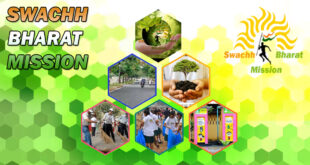Without adequate water, sanitation and hygiene amenities, infection control is severely compromised
Healthcare facilities are many and varied. Some are primary, others are tertiary. Many are public, some are private. Some meet specific needs, whether dentistry or occupational therapy, and some are temporary, providing acute care when disaster strikes.
Whatever their differences, and wherever they’re located, adequate water, sanitation and hygiene (WASH) amenities, including waste management and environmental cleaning services, are critical to their safe functioning. When a healthcare facility lacks adequate WASH services, infection prevention and control are severely compromised. This has the potential to make patients and health workers sick from avoidable infections. As a result (and in addition), efforts to improve maternal, neonatal and child health are undermined. Lack of WASH facilities also results in unnecessary use of antibiotics, thereby spreading antimicrobial resistance.
As a joint report published earlier this year by the World Health Organization and the UN Children’s Fund (UNICEF) outlines, WASH services in many facilities across the world are missing or substandard. According to data from 2016, an estimated 896 million people globally had no water service at their healthcare facility. More than 1.5 billion had no sanitation service. One in every six healthcare facilities was estimated to have no hygiene service (meaning it lacked hand hygiene facilities at points of care, as well as soap and water at toilets), while data on waste management and environmental cleaning was inadequate across the board. A World Health Assembly Resolution passed in May is hoping to catalyse domestic and external investments to help reach the global targets. These include ensuring at least 60% of all healthcare facilities have basic WASH services by 2022; at least 80% have the same by 2025; and 100% of all facilities provide basic WASH services by 2030.
For this, member states should implement each of the WHO- and UNICEF-recommended practical steps. First, health authorities should conduct in-depth assessments and establish national standards and accountability mechanisms. Across the region, and the world, a lack of quality baseline data limits authorities’ understanding of the problem. As this is done, and national road-maps to improve WASH services are developed, health authorities should create clear and measurable benchmarks that can be used to improve and maintain infrastructure and ensure that facilities are ‘fit to serve’.
Educating the health workers
Second, health authorities should increase engagement and work to instil a culture of cleanliness and safety in all health-care facilities. Alongside information campaigns that target facility administrators, all workers in the health system — from doctors and nurses to midwives and cleaners — should be made aware of, and made to practise, current WASH and infection prevention and control procedures (IPC). To help do this, modules on WASH services and IPC should be included in pre-service training and as part of ongoing professional development. In addition, authorities should work more closely with communities, especially in rural areas, to promote demand for WASH services.
And third, authorities should ensure that collection of data on key WASH indicators becomes routine. Doing so will help accelerate progress by promoting continued action and accountability. It will also help spur innovation by documenting the links between policies and outcomes. To make that happen, WHO is working with member states as well as key partners to develop a data dashboard that brings together and tracks indicators on health facilities, including WASH services, with a focus on the primary care level.
As member states strive to achieve the ‘flagship priorities’ and work towards the SDG targets, that outcome is crucial. Indeed, whatever the healthcare facility, whoever the provider, and wherever it is located, securing safe health services is an objective member states must boldly pursue.
Source : https://www.thehindu.com/todays-paper/tp-opinion/a-wash-for-healthcare/article28460468.ece
 Chinmaya IAS Academy – Current Affairs Chinmaya IAS Academy – Current Affairs
Chinmaya IAS Academy – Current Affairs Chinmaya IAS Academy – Current Affairs



